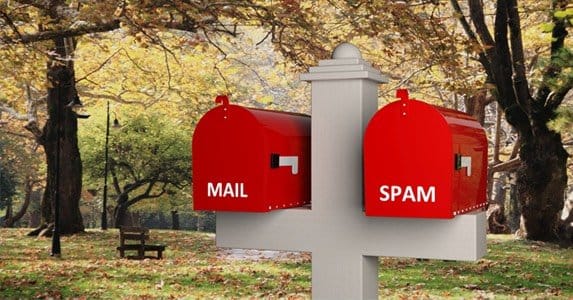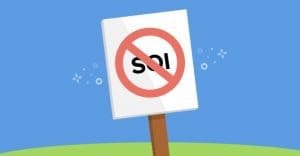Are Your Newsletter Blasts Ending up in the Spam Box?

By far the number one enemy of the mailing list is the spam filter. Spammers have become such a nuisance over the last few decades that it’s impossible to find an email address without dozens coming in every day. If you register an email address, it might be sold as part of a list, depending on the service. There are web bots designed to crawl the Internet looking for addresses to add to lists. Any time you sign up for a service, you can end up on a spammer’s list.
It’s incredibly easy for your company emails to end up filtered by a spam filter. Different email services have different filters, some more zealous than others. Hell, Google’s Gmail even filters legitimate emails if you archive them without opening them frequently enough.
As a business, how can you ensure that your emails aren’t ending up in the spam folder?
1. Never Buy Lists
It’s possible to purchase lists of email addresses to add to your database, but you should never do so. There are three very good reasons not to.
First, the emails you get aren’t from people who chose to opt in. This means you have a list full of email addresses for people who don’t care about your product. You’ll also have a bunch of bad addresses.
Second, the list will be filled with broken addresses and honeypots. Broken addresses mean that every time you send out a newsletter, you’ll be bombarded with mail delivery failure messages. Honeypots are much worse. They’re email addresses designed by anti-spam companies specifically to be seeded into lists. Any message arriving to that address, the company knows is coming from someone who bought a spam list. They pass the sender information along to ISPs and email providers like Google or Yahoo, who then add those senders to spam filters.
Third, they’ll screw with your testing. If you have 10,000 people on your mailing list and you want to test out your message, you can divide that database into two groups of 5,000 and send out varying messages to each side. If 8,000 of those emails are from a purchased list, you have no way of knowing which half of your mailing list contains more. You might have one side with 5,000 bad addresses and the other side with 2,000 good and 3,000 bad. The side with the 2,000 good is going to perform way better, even if the message sent to the other side was better.
Even if the company selling you a mailing list claims that the addresses are highly targeted towards your industry or you specifically, they’re probably lying just to make the sale. They might be somewhat targeted, or they might not be targeted at all.
2. Avoid Known Spam Phrases
The most common reason a newsletter might end up filtered by a spam filter is because of the language you use. Unfortunately, just about every variation of sales language is going to end up filtered, unless the user sets up a whitelist or you’re very careful about how you phrase it. This is because spammers have tried every trick under the sun to get past filters, and the filters have evolved to detect all of those tricks and more.
Obviously, you should also avoid common spam terms, like pharmacies, drug names, and so forth.
Spam filters also use some cues from HTML in the composition of your message. Bad HTML is a sign of spam, as are any attempts at scripts.
3. Ask for Whitelisting
A whitelist is the opposite of a blacklist; a list of something that is expressly allowed without question. An email whitelist for your company would be the user telling their email client to allow your messages regardless of content. You can add a footnote to your messages: “Want to guarantee delivery of our messages? Whitelist company@address.com!”
You can also get whitelisted at the domain level. Using an email service provider can get you an in with Google, Yahoo and other email services. When those companies know you’re sending messages through reputable services, services that are known to block spammers, you’re more likely to be guaranteed whitelisted.
4. Watch your Sender
The “from” field in your email is very important. If you’re sending a message from support@company.com, you’re going to have a much higher chance of making it through than you would sending something from noreply@company.com or asdf1234@company.com. The domain name is not a guarantee.
You should also avoid changing your sender if at all possible.
5. Send Mail Often
But not too often. If you’re only sending one message every couple of months, users are going to forget who you are or why they were on your mailing list. On the other hand, if you’re sending a message every two days, you’re standing very close to the spam fire. The only companies that can get away with daily or near-daily messages are companies that provide daily services, or companies too large to be blacklisted, like Amazon or eBay.
6. Remember the CAN-SPAM Act
The CAN-SPAM act is a law that applies in the United States. It governs the quality and content of “any electronic mail message, the primary purpose of which is the commercial advertisement or promotion of a commercial product or service.” While you are unlikely to actually receive the fines associated with breaking the law, you can find yourself marked as a spammer. What are the rules to follow?
- Don’t spoof header information or use a misleading header.
- Don’t use a deceptive subject line.
- Make sure your recipients know your content is advertorial.
- Make sure recipients know where you’re located.
- Include a method for recipients to opt-out.
- Honor opt-outs.
Additionally, you should monitor any third parties sending out mail on your behalf and make sure they aren’t breaking any of the regulations.
7. Use a Spam Checker
There are a few web services available, like MailingCheck, SpamAssassin or IsNotSpam that will allow you to check your newsletter before you send it. They will tell you if anything trips their spam filters, including language, header info, code or content.
 ContentPowered.com
ContentPowered.com




